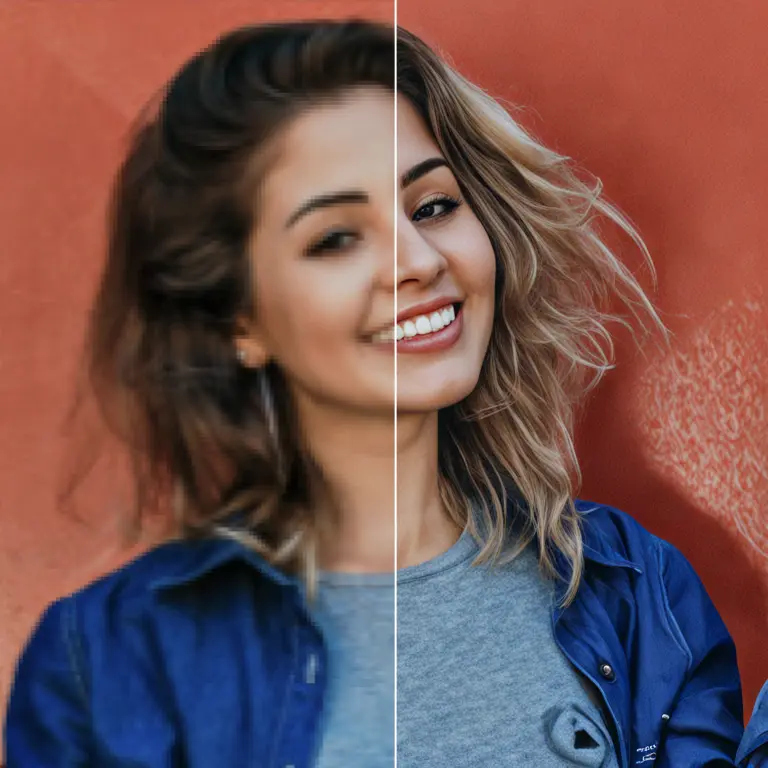ComfyUI Node: CLIPTextEncodeBLIP
CLIPTextEncodeBLIP
Categoryconditioning
paulo-coronado (Account age: 2971days) Extension
comfy_clip_blip_node Latest Updated
2024-05-22 Github Stars
0.03K
How to Install comfy_clip_blip_node
Install this extension via the ComfyUI Manager by searching for comfy_clip_blip_node- 1. Click the Manager button in the main menu
- 2. Select Custom Nodes Manager button
- 3. Enter comfy_clip_blip_node in the search bar
Visit ComfyUI Online for ready-to-use ComfyUI environment
- Free trial available
- 16GB VRAM to 80GB VRAM GPU machines
- 400+ preloaded models/nodes
- Freedom to upload custom models/nodes
- 200+ ready-to-run workflows
- 100% private workspace with up to 200GB storage
- Dedicated Support
CLIPTextEncodeBLIP Description
Enhances text encoding using CLIP model and BLIP framework for AI projects integrating text and visual data.
CLIPTextEncodeBLIP:
The CLIPTextEncodeBLIP node is designed to enhance the process of text encoding by leveraging the capabilities of the CLIP model in conjunction with the BLIP (Bootstrapped Language-Image Pre-training) framework. This node is particularly useful for AI artists and developers who are working on projects that require the integration of textual and visual data. By utilizing advanced encoding techniques, it allows for the generation of rich, context-aware text embeddings that can be used in various applications such as image captioning, visual question answering, and more. The primary goal of this node is to provide a seamless and efficient way to encode text with custom weights and interpretations, ensuring that the resulting embeddings are both meaningful and relevant to the given context.
CLIPTextEncodeBLIP Input Parameters:
clip
The clip parameter represents the CLIP model instance that is used for encoding the text. It is essential for processing the input text and generating the corresponding embeddings. This parameter does not have specific minimum or maximum values, as it is a model instance rather than a numerical input. The effectiveness of the node largely depends on the quality and configuration of the CLIP model provided.
image
The image parameter is an input image that is used in conjunction with the text to generate context-aware embeddings. The image is processed and resized to a specific dimension to ensure compatibility with the model. This parameter is crucial for tasks that involve both text and image data, such as image captioning.
min_length
The min_length parameter specifies the minimum length of the generated text or caption. It ensures that the output text meets a certain length requirement, which can be important for maintaining the quality and completeness of the generated content. The exact minimum value is not specified, but it should be set according to the needs of the specific application.
max_length
The max_length parameter defines the maximum length of the generated text or caption. It helps in controlling the verbosity of the output and ensures that the generated text does not exceed a certain length, which can be useful for applications with strict length constraints. The exact maximum value is not specified, but it should be chosen based on the desired output length.
token_normalization
The token_normalization parameter is used to normalize the tokens generated during the encoding process. This normalization helps in standardizing the token representations, which can improve the consistency and quality of the embeddings. The specific method of normalization is not detailed, but it plays a crucial role in the encoding process.
weight_interpretation
The weight_interpretation parameter allows for the customization of how weights are interpreted during the encoding process. This parameter provides flexibility in adjusting the influence of different parts of the text on the final embeddings, enabling more tailored and context-specific results. The exact options for this parameter are not specified, but it should be configured based on the desired emphasis in the text.
string_field
The string_field parameter is a template string that includes placeholders for the generated text. It allows for the integration of the generated text into a predefined format, which can be useful for creating structured outputs or prompts. The specific format and placeholders are determined by the user's requirements.
CLIPTextEncodeBLIP Output Parameters:
CONDITIONING
The CONDITIONING output parameter represents the final text embeddings generated by the node. These embeddings are context-aware and can be used in various applications that require a deep understanding of the relationship between text and images. The embeddings are designed to capture the nuances of the input text and image, providing a rich representation that can enhance downstream tasks such as image captioning or visual question answering.
CLIPTextEncodeBLIP Usage Tips:
- Ensure that the
clipmodel instance is properly configured and compatible with the BLIP framework to achieve optimal results. - Adjust the
min_lengthandmax_lengthparameters based on the specific requirements of your application to control the verbosity and completeness of the generated text. - Experiment with the
weight_interpretationparameter to fine-tune the influence of different text components on the final embeddings, allowing for more customized and context-specific results.
CLIPTextEncodeBLIP Common Errors and Solutions:
Error: "Model not found"
- Explanation: This error occurs when the specified CLIP model instance is not available or incorrectly configured.
- Solution: Ensure that the CLIP model is correctly installed and accessible by the node. Verify the model path and configuration settings.
Error: "Image processing failed"
- Explanation: This error indicates an issue with resizing or processing the input image.
- Solution: Check the format and dimensions of the input image. Ensure that it meets the required specifications for processing.
Error: "Token normalization error"
- Explanation: This error arises when there is a problem with the token normalization process.
- Solution: Review the
token_normalizationparameter settings and ensure that they are compatible with the input text and model requirements.
CLIPTextEncodeBLIP Related Nodes
RunComfy is the premier ComfyUI platform, offering ComfyUI online environment and services, along with ComfyUI workflows featuring stunning visuals. RunComfy also provides AI Playground, enabling artists to harness the latest AI tools to create incredible art.



